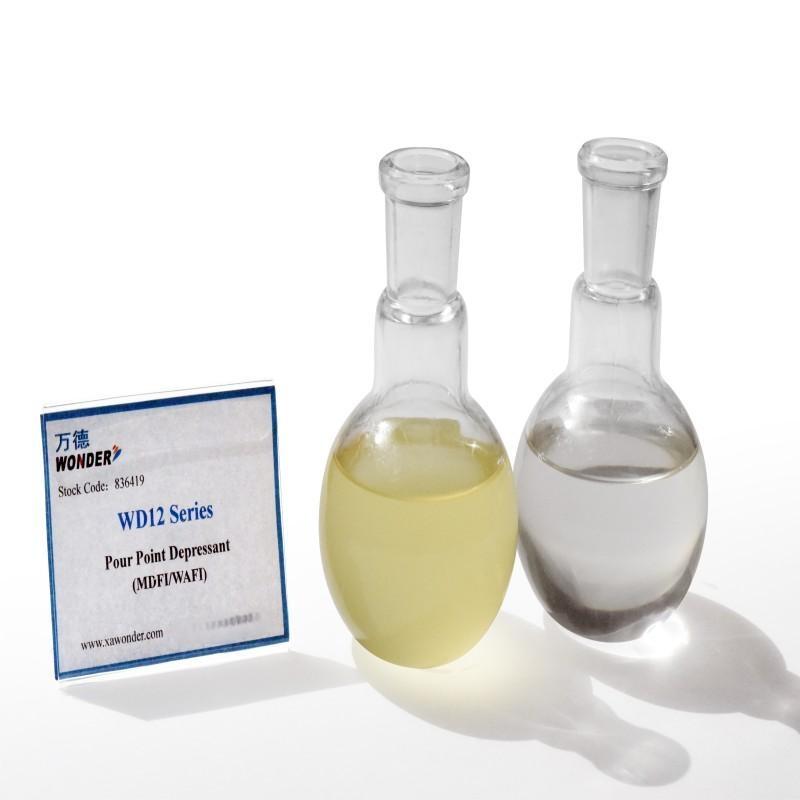-
Categories
-
Pharmaceutical Intermediates
-
Active Pharmaceutical Ingredients
-
Food Additives
- Industrial Coatings
- Agrochemicals
- Dyes and Pigments
- Surfactant
- Flavors and Fragrances
- Chemical Reagents
- Catalyst and Auxiliary
- Natural Products
- Inorganic Chemistry
-
Organic Chemistry
-
Biochemical Engineering
- Analytical Chemistry
-
Cosmetic Ingredient
- Water Treatment Chemical
-
Pharmaceutical Intermediates
Promotion
ECHEMI Mall
Wholesale
Weekly Price
Exhibition
News
-
Trade Service
Since entering August, international oil prices have returned to the level at the beginning of this year, and the main reason for the sharp decline in oil prices is the slowdown in world economic growth and the decline in
oil demand caused by the energy crisis.
At present, the international oil market is still not dissipated in the supply concerns, "OPEC +" will continue to implement a strict production control policy, only 100,000 barrels / day in September this year, the rest of this year the international oil price will be likely to return and remain above
the level of $100 / barrel.
A dramatic drop in oil prices
The fall in international oil prices on August 3 was very dramatic, but it also more intuitively illustrated the dominant role
of demand.
Before the 31st "OPEC+" ministerial meeting, the market is full of expectations for this meeting, because after US President Biden's visit to the Middle East, Saudi Arabia and others are more likely to increase oil production
at this meeting.
But the meeting did not meet the market's general expectations, during which WTI rose 2.
3% in a short period of time, re-rising above $96 / barrel, and Brent crude oil also rose 1.
29%, re-rising above $102 / barrel
.
Two events that occurred on August 3 weighed down oil prices, which were back on the rise
.
First, the U.
S.
Energy Information Administration announced that last week U.
S.
crude oil inventories increased by 4.
5 million barrels and gasoline inventories increased by 200,000 barrels, while the market's expectation is that crude oil inventories should be reduced by 600,000 barrels and gasoline inventories should be reduced by 1.
6 million barrels
.
This is bearish news, crude oil inventory data is much higher than expected, while gasoline inventory data is even more disappointing and should not see an increase
in gasoline inventories in the summer.
Second, the United States, the European Union in charge of the Iranian nuclear negotiations Robert Marley and Enrique Mora announced on social media that they are on their way to Vienna, and the Iranian nuclear negotiations that are not directly discussed will resume
in Vienna on August 4.
Under the shock of these two news, international oil prices took a
sharp turn.
Among them, WTI turned down 4.
2% after rising above $96/bbl, losing $91/bbl, down more than $6 from the day's high, closing at $90.
66/bbl; Brent crude oil fell 4% to close at $96.
78 per barrel after rising above $102/bbl
.
The concern about demand is
The main reason for the decline in international oil prices
Although the decline in international oil prices on August 3 is very dramatic, as the international oil prices have fluctuated since the beginning of July, the main reason behind it is the concern about oil demand, mainly in three aspects
.
Persistently high energy prices have led to high inflation and a slowdown
in world economic growth.
Starting from the second half of 2021, with the improvement of the new crown pneumonia epidemic on a global scale and the gradual recovery of economic and social life in various countries in the world, the prices of natural gas, coal and oil have risen significantly, and the energy crisis of different degrees has spread from Europe to the world
.
After the outbreak of the Ukraine crisis on February 24 this year, the energy crisis intensified and energy prices rose to new highs
.
The consequence of the sharp rise in energy prices is high global inflation and slowing
economic growth.
In June, the CPI in the United States was as high as 9.
1% and the European Union was as high as 8.
6%.
To curb rising inflation, the United States has raised interest rates four times, and the European Union has raised rates by 50 basis points
for the first time since July 2011.
On July 26, the International Monetary Fund released its World Economic Outlook report, which lowered world economic growth to 3.
2% in 2022, 0.
4 percentage points lower than in April; global inflation is forecast to reach 8.
3% in the fourth quarter of this year, up from 6.
9% in April, with inflation in advanced economies at 6.
6% and emerging market and developing economies at 9.
5%.
Slowing economic growth has brought about a sluggish
oil consumption.
In the Oil Market Report in January this year, the International Energy Agency predicted that world oil demand will increase by 3.
325 million bpd in 2022 and world oil consumption will return to pre-epidemic levels
.
But in the July 2022 Oil Market Report, the IEA lowered its forecast for world oil demand growth in 2022 as economic activity slowed, with world oil demand expected to increase by only 1.
7 million barrels
per day in 2022.
The impact of slowing economic growth on oil consumption is most representative of
the United States.
According to the U.
S.
Energy Information Administration, U.
S.
gasoline consumption was 8.
9 million b/d from the first week of April to the first week of July, down 3 percent
from the same period in 2021.
This year's data shows that the current gasoline consumption in the United States has not only not returned to pre-epidemic levels, but even lower than the same period in 2021, which has intensified market concerns about oil demand and continuously triggered lower
international oil prices.
The recurrence of the new crown pneumonia epidemic has had a negative impact on China's oil consumption, hitting international oil prices
from time to time.
China is the world's largest oil importer, and the changes in China's oil consumption and import figures directly affect the trend
of international oil prices.
Affected by the epidemic, in the first half of this year, China's economic growth was 2.
5%, of which 4.
8% in the first quarter and only 0.
4% in
the second quarter.
Correspondingly, energy consumption is not optimistic
.
In June this year, China's refined oil consumption was 32.
45 million tons, down 7% year-on-year, of which gasoline fell by 11.
5%.
In the first half of this year, China imported 252.
52 million tons of crude oil, down 3.
1% year-on-year; Imported natural gas was 53.
57 million tons, down 10.
0%
year-on-year.
Since entering July, although the international oil market is still facing greater supply pressure, oil consumers represented by the United States have continuously asked Saudi Arabia to increase oil production, but the market's concern about demand has been increasing, and as soon as the news of demand decline or epidemic is out, international oil prices will have a round of decline
.
The smallest "OPEC+" production increase in history has had little effect
Concerns about demand have brought international oil prices back to the beginning of the year on August 4, but the current international oil market concerns about supply have not dissipated, and "OPEC+" continues to implement a restrained production policy and strictly control the supply
of the international oil market.
On August 3, the 31st "OPEC+" ministerial meeting was held as scheduled, and public opinion expected that OPEC+ would increase oil production in September by a large margin, because US President Joe Biden visited Saudi Arabia and the United Arab Emirates
in mid-July.
However, the meeting decided to increase production by only 100,000 bpd in September, which was considered by some to be the smallest increase in the history of the organization
.
Compared with the resolutions of previous meetings, the resolutions of the 31st "OPEC+" ministerial meeting are slightly richer
.
The meeting noted the dynamics and rapid changes in the fundamentals of the oil market and the need for a continuous assessment of market conditions; The supply of excess capacity is extremely limited, so it is necessary to use excess capacity
very carefully in response to serious supply disruptions.
chronic underinvestment in the oil sector, resulting in a reduction in excess capacity in the value chain (upstream/midstream/downstream); Insufficient investment in the upstream sector will affect the provision of timely and adequate oil supply, and after 2023, oil producers, some OPEC members and non-OPEC oil producers who do not participate in OPEC+ will not be able to meet the growing demand for
oil.
In June, the OECD commercial oil inventory was initially estimated at 2.
712 billion barrels, 163 million barrels lower than the same period last year, and emergency oil inventories were already at their lowest level
in more than 30 years.
Maintaining the value and importance of consensus is critical to the cohesion of OPEC and non-OPEC producers
.
In view of the latest oil market fundamentals, the meeting decided that in September 2022, OPEC and non-OPEC participating countries will increase production by 100,000 bpd, without prejudice to the principles
decided at the July 18, 2021 meeting mentioned above.
Reaffirming the importance of full compliance with the compensation mechanism, which should be submitted
in accordance with the requirements of the 15th OPEC and Non-OPEC Ministerial Conferences.
The content added to the resolution of this meeting is mainly the judgment
of "OPEC+" on the market.
"OPEC+" believes that, on the one hand, due to insufficient investment, the world's surplus oil production capacity is limited, which will affect the global oil supply in 2023; On the other hand, world oil inventories are at their lowest level
in more than 30 years.
On August 1, Haitham Al Ghais from Kuwait served as the new OPEC secretary-general, and this meeting was the first OPEC+ ministerial meeting
organized by Geis as OPEC secretary-general.
Qass has more than 30 years of experience in the oil industry and was deputy general manager of the international department of Kuwait National Petroleum Corporation before becoming the secretary general
of OPEC.
At the time of the sharp fall in international oil prices in early July, analysts were divided on
the direction of the future international oil market.
In mid-July, Citigroup predicted that if there is a global recession that seriously affects oil demand, crude oil prices could fall to $65/barrel by the end of the year; By the end of 2023, crude oil prices could fall to $45/bbl
.
The movement of international oil prices in the four trading days since August seems to confirm that Citi's forecast is partially correct
.
On the contrary, when oil prices continued to fall in early August, Goldman Sachs still insisted on bullishness, believing that international oil prices still have strong upside risks, and Brent crude oil may rise to $130 / barrel in the second half of the year, on the grounds that market demand is still higher than supply, and currently maintains a supply and demand deficit
of 1 million barrels / day.
High volatility is an essential feature of the international oil market
The tight balance of the international oil market at present and for some time to come has not undergone a fundamental reversal
.
From the supply side, "OPEC+" is still strictly controlling oil supply; From the demand side, it remains to be seen
whether high oil prices will lead to a long-term decline in oil demand.
In the United States, for example, gasoline consumption in the U.
S.
has grown from 8.
52 million bpd to 9.
25 million bpd in the last week of July as gasoline prices have fallen from a high of $5.
02/gph on June 14 to the current $4.
139 million
.
The Iranian nuclear negotiations were one of the two major factors in the turn of
international oil prices from rising to falling on August 3.
On August 4, Iranian Oil Minister Augyi publicly stated that Iran is ready to return to the international crude oil market as soon as possible, and European countries should consider the issue of
"winter is coming".
The new round of Iranian nuclear negotiations may not have a good outcome, and it is doubtful
whether Iranian oil can return to the international oil market in the coming period.
Although the international oil price will certainly fluctuate in the remaining 5 months of this year, even large fluctuations, the overall trend will be a pullback to the upside
.
Brent crude oil returns and remains above $100/barrel, which will still be a high-probability event
.
It should be emphasized that high volatility is an essential feature
of the international oil market.
Therefore, from a practical point of view, strict risk control is an indispensable means and tool
for participating in the international oil market.







